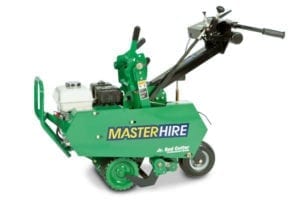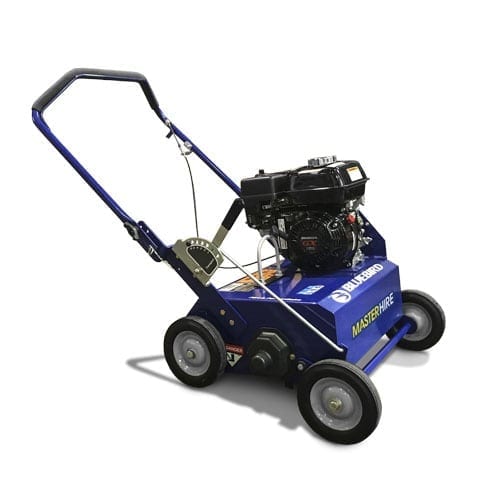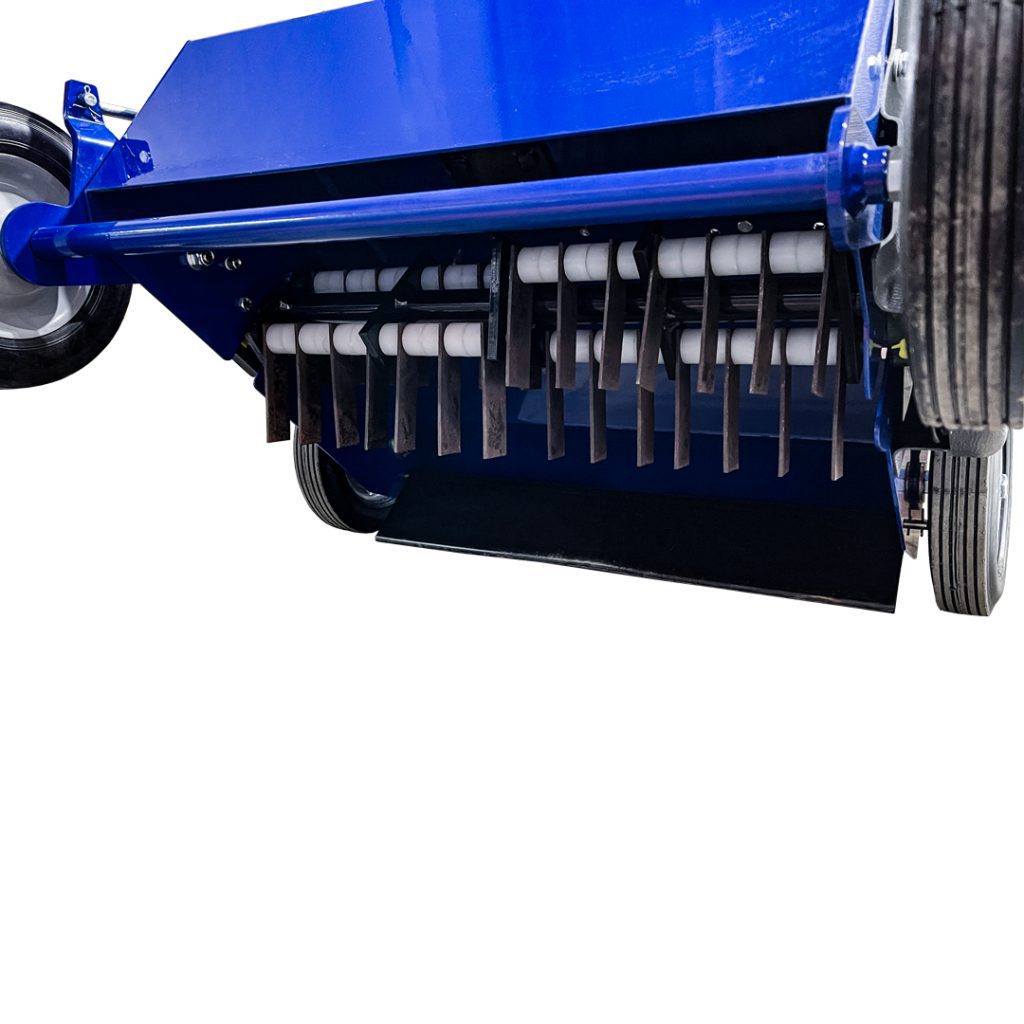
If you are looking to for a turf remover or looking to relocate some grass in your backyard or job site then you have come to the right place. Master Hire has got all the tools to help you get your lawn and gardens looking their best. To make it easier, we’ve answered some commonly asked questions about removing turf and using a turf cutter.
Turf cutters are the best grass removal machine for your job
Depending on what you intend to do with the grass later, you have a few options. You can remove grass by hand, however, it involves a lot of hard work with a shovel. To do this you would make vertical cuts into the soil with a shovel cutting the grass into sections, then slide your shovel horizontally separating the grass from the roots. This process is painful, messy and a lot of work. The end result is you are left with is a sore back and an uneven dirt surface, filled with divots from your shovel. Master Hire’s turf cutters are the perfect grass removal tool. Each unit is self-propelled and has a sharp blade that does all this hard work for you leaving a nice smooth dirt surface.
What is a sod cutter or turf cutter?
A sod cutter is also commonly referred to in Australia as a ‘turf cutter / lawn cutter’ or ‘turf remover / lawn remover”. A turf cutter is a self-propelled turf removal machine that cuts into layers of grass and soil to reveal the ground underneath. You will be left with long strips of grass and a small layer of soil held together by the roots. This is commonly referred to as the ‘sod’ or ‘turf’.
How do you remove grass?
Once you have used the turf cutter on the grass at the desired depth, you will be left with long carpet-like strips of grass. You can simply cut them into lengths, roll them up into manageable pieces and carry them away to either dispose of or re-lay elsewhere if you choose. People often refer to these machines as a turf lifter or turf stripper because of the long grassy strips they leave behind.
Can you replant turf left over from a turf cutter?
Yes, you can use a turf cutter to remove the sod/turf layer from your lawn and replant it again. You will need to make sure your turf cutter is set to the right depth to ensure its collecting enough of the root system and not leaving half the roots behind. If the turf cutter is not cutting deep enough, just adjust the depth and continue. You will need to keep the ground moist and for best results, you will need to prepare your ground properly before re-laying your turf.
Can you use a turf cutter to remove weeds?
Not completely. Turf cutters use a thin blade that slides along under the grass separating it from the soil beneath. The machine will cut through almost everything leaving some larger roots of the weeds behind. You can remove the top layer of grass and weeds but you may have some roots left over. These will most likely grow back if you don’t poison them or dig them up entirely.
How to use a turf cutter?
Here is a quick guide to operating a turf cutter safely.
- Firstly, check over the machine to ensure all the levers are set to the disengaged setting and that there are no loose bolts or nuts.
- Next, check the fuel and oil levels on the machine and that no wires or hoses are loose or damaged. If you are hiring a machine, this should already be done, but it’s best to check yourself.
- Then, start the machine by switching the ignition button to the ON position > Set the choke lever to the ON position > Then pull the starter cord until the engine starts. Once the machine is running, switch the choke lever to the OFF position.
- Next set the blade angle and depth. Normally you want to ensure the blade angle is set to flat and the depth is roughly 20mm deep.
- Adjust the throttle to suit a walking speed.
- Engage the blade and activate the dead man switch. This will start to drive the turf cutter forward and start cutting into your lawn.
(If the turf cutter is not cutting deep enough, simply adjust the depth of the blade. For best results make sure to soften the turf by watering it beforehand. A quick test to see if it is soft enough is to try to insert your thumb to the first knuckle into the ground. If you can, then it’s ready to work with. Cutting into hard, dry ground can slow down your job and can even cause damage to the machine).
Setting the turf cutter depth
To start out we recommended doing a test run and setting turf cutters blade depth to a relatively high cutting height. Then adjust it by lowering it gradually according to your working conditions. Typically you want to set your cutting depth to around 20 – 25mm thick with minimal pitch angle on the blade (flat blade angle).
If the soil is extremely hard or the blade is slightly dull this may cause the blade to ride out of the ground, to combat this you can adjust blade angle and tilt it downward. A short trial run will indicate which is the best blade angle for your soils conditions.
There are a few signs that you don’t have your turf cutter blade set to the right depth. Some examples:
- The grass layer is falling apart as you try to pick it up (this might mean you are cutting too high and need to set the blade a little lower below the roots and soil layer).
- Grass roots are still visible in the soil (To combat this you can set the blade to cut slightly deeper into the soil – aiming to cut beneath the grass roots).
Where can I get a turf cutter?
This is easy. You can hire a turf cutter from Master Hire anywhere from a few hours or a few weeks. These units are quite large and heavy, so you will need a ute or trailer with ramps to collect the machine, otherwise, we can deliver the turf cutter directly to you. Delivery prices will vary depending on location. For Master Hire store locations and opening hours, see our contact us page.
We highly recommend you prepare your soil before cutting and before relaying more turf. Some other applications include removing the top layer of grass before digging a trench. By removing the grass temporarily before you dig a trench, you will give your lawn the best chance to recover quickly. Master Hire’s turf cutters are the ideal tool for removing grass. They are easy to use and will save you a lot of hard work and time.




